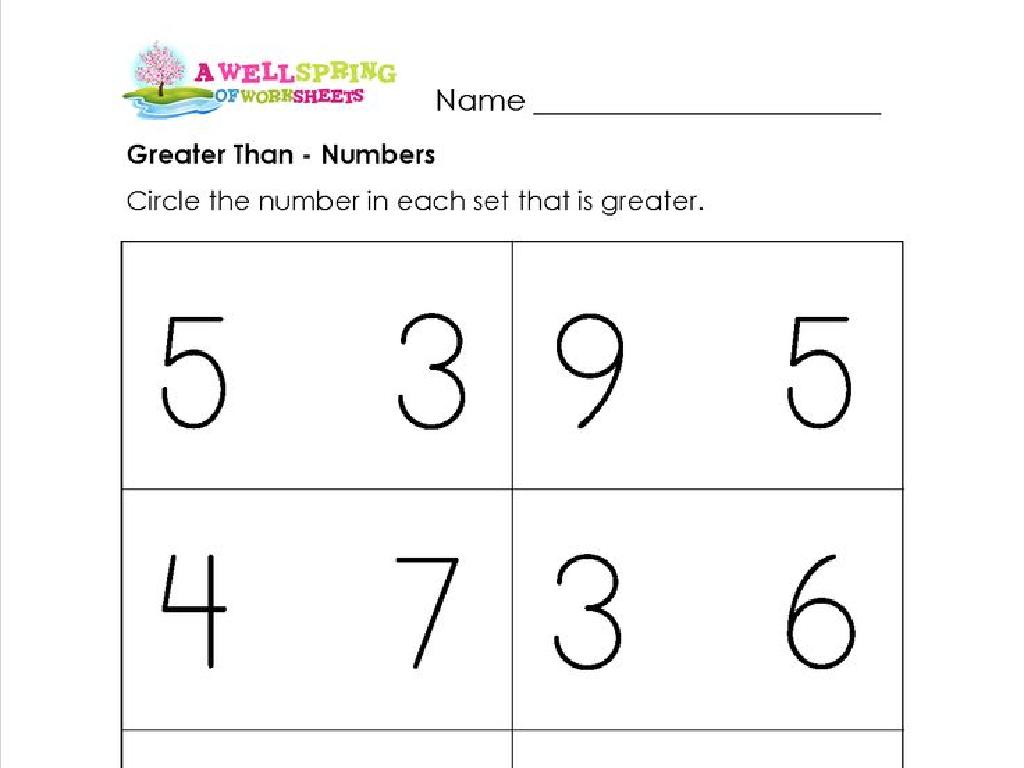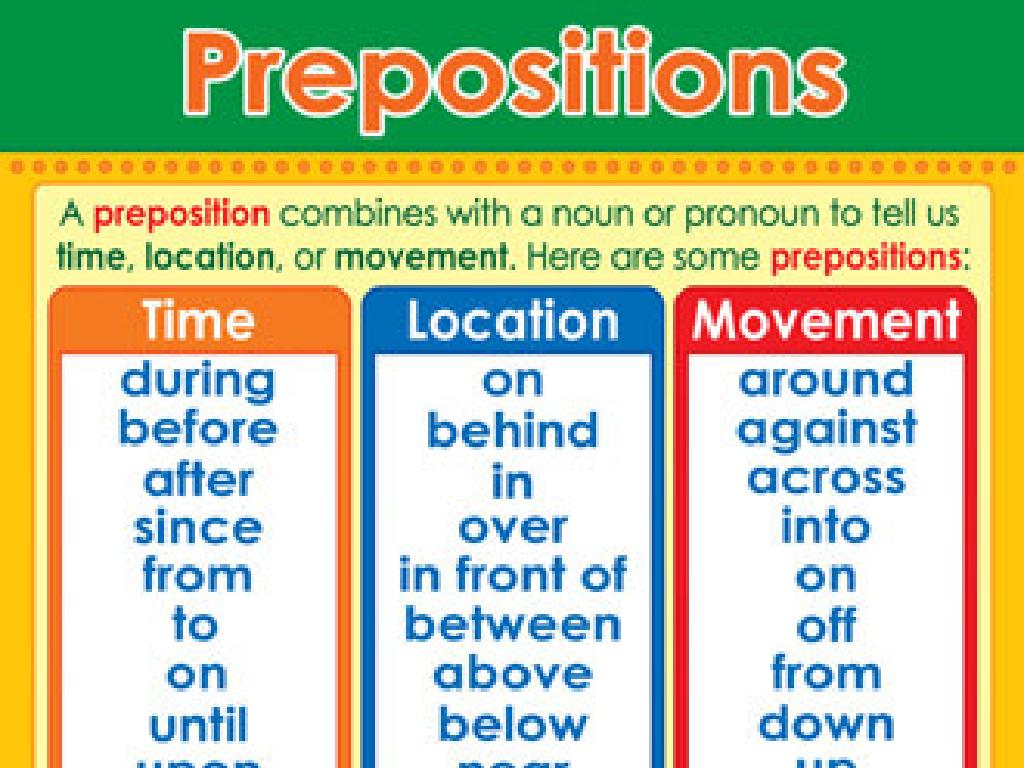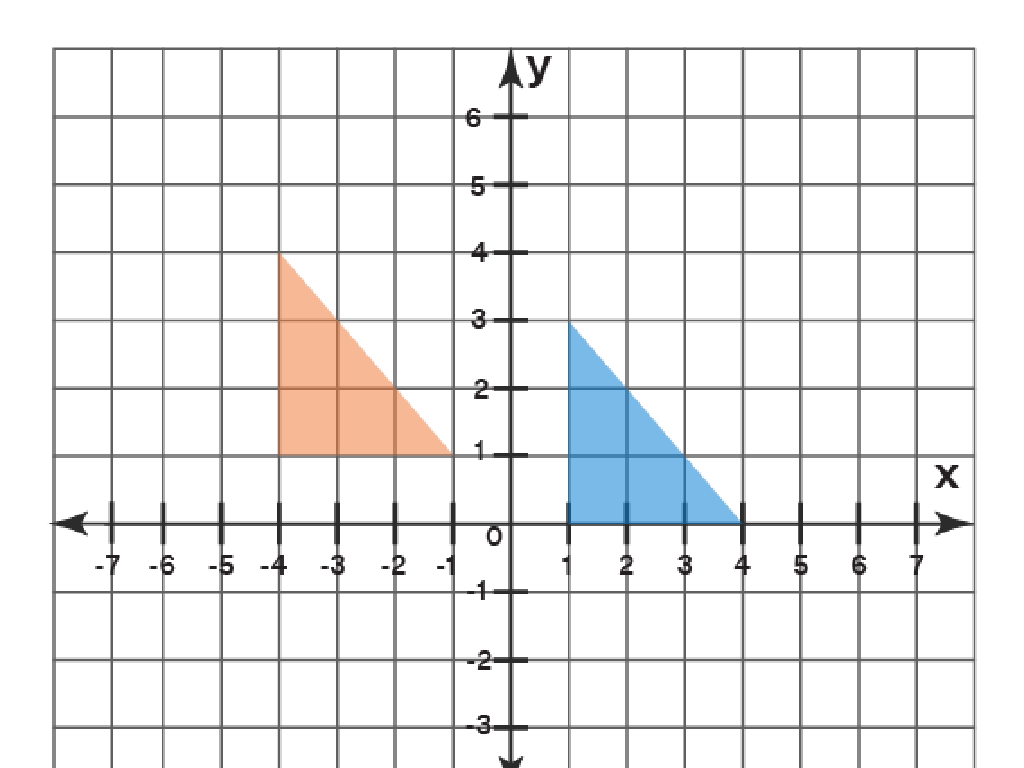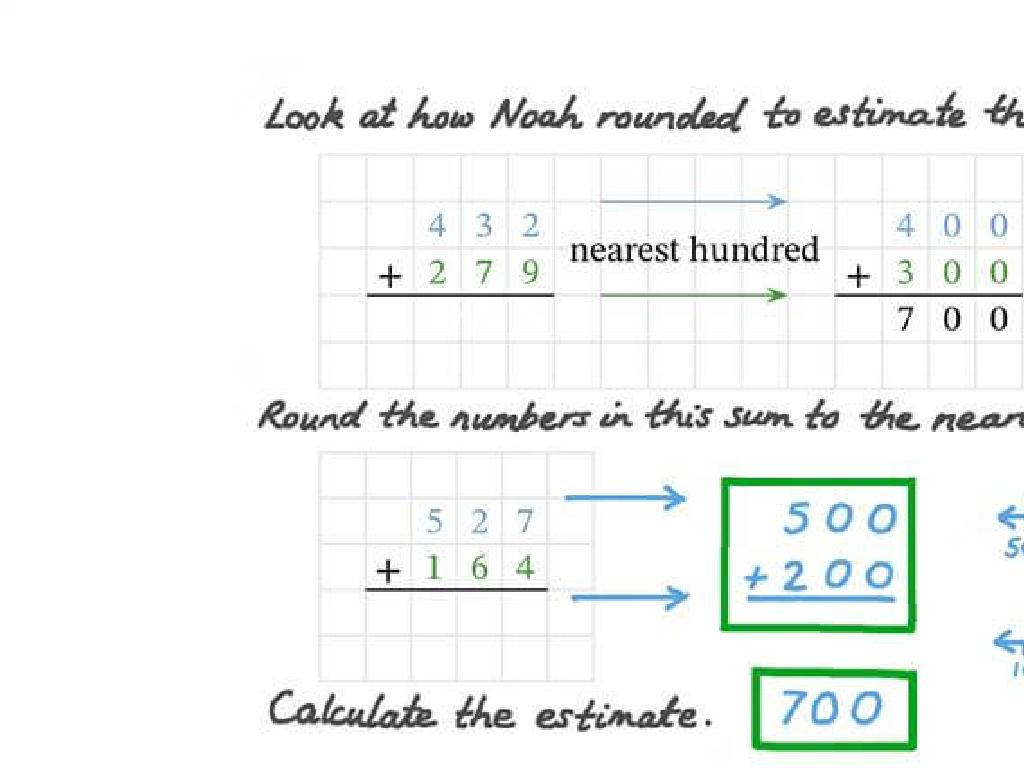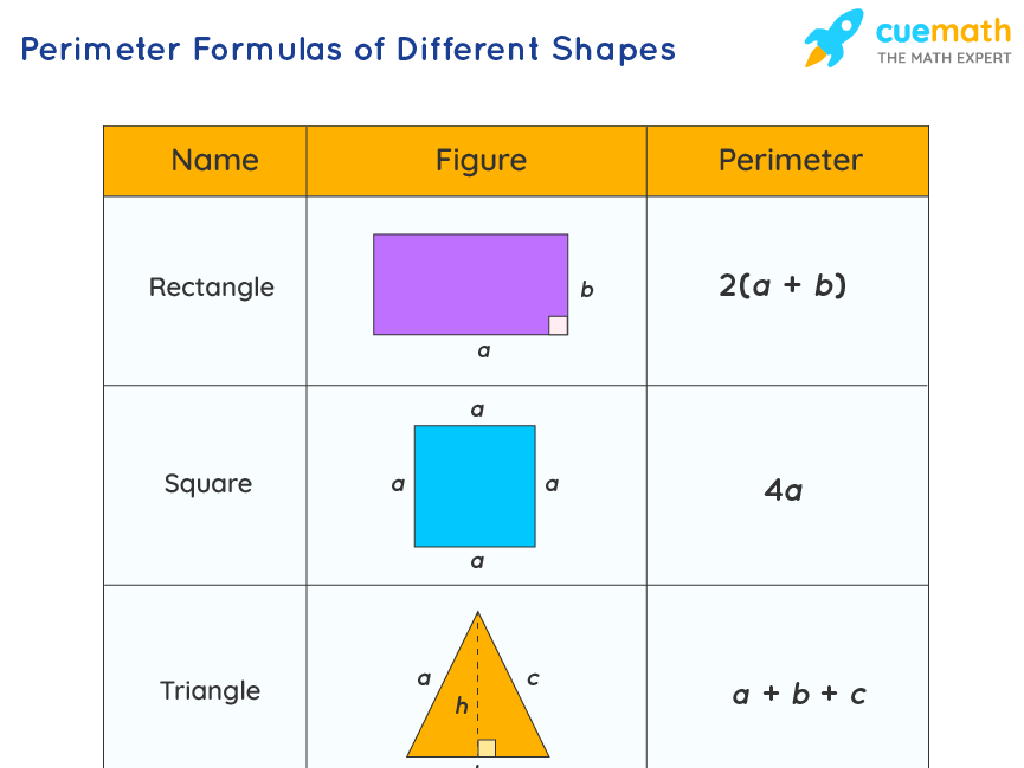Name Countries Of Africa: Region 1
Subject: Social studies
Grade: Eighth grade
Topic: Africa: Geography
Please LOG IN to download the presentation. Access is available to registered users only.
View More Content
Exploring Africa: Region 1
– Introduction to the African Continent
– Africa, the 2nd largest continent with diverse ecosystems.
– Significance of regional study
– Understanding regions helps grasp cultural & geographical diversity.
– Overview of Africa’s Region 1
– Region 1 includes North African countries like Egypt, Libya, and Tunisia.
– Engage with Region 1’s geography
– We’ll explore maps, capitals, and features of Region 1 countries.
|
This slide introduces students to the vast and diverse continent of Africa, emphasizing the importance of studying its different regions to understand the continent’s cultural and geographical diversity. Highlight Region 1, which typically refers to North Africa, and includes countries such as Egypt, Libya, Tunisia, Algeria, Morocco, and Western Sahara. Encourage students to think about the unique geographical features of this region, such as the Sahara Desert and the Nile River, and how these have influenced the history and culture of the countries within. Provide maps and have students locate each country, identify their capitals, and discuss prominent physical features and climatic conditions. This will set the stage for a deeper dive into the individual countries and their specific characteristics in subsequent lessons.
Exploring Africa’s Regions: Focus on Region 1
– Definition of a region
– A region is an area with common features
– Significance of regions in Africa
– Understanding regions helps in studying geography, culture, and economics
– Characteristics of Africa’s regions
– Each region has unique physical, cultural, and economic traits
– Countries in Region 1
– Region 1 includes countries like Egypt, Libya, and Tunisia
|
This slide introduces students to the concept of regions and their importance in the context of Africa’s geography. A region is defined as an area distinguished by unique features that may be physical, cultural, or economic. Understanding regions is crucial for comprehending the continent’s diversity and complexity. Africa is divided into several regions, each with distinct characteristics. For example, Region 1, which includes North African countries, is known for its desert landscapes, historical ties to ancient civilizations, and strategic location along the Mediterranean. Students should be encouraged to explore the countries within Region 1, such as Egypt, Libya, and Tunisia, and identify key features such as the Sahara Desert, Nile River, and the region’s role in early human history.
Exploring Africa: Countries of Region 1
– Identify Region 1 countries
– Countries like Egypt, Libya, and Tunisia
– Geographical location of each
– North of the continent, bordering the Mediterranean
– Interesting facts about some countries
– Egypt is home to the ancient Pyramids, Libya has vast deserts
– Discuss cultural diversity
– Region 1 showcases a mix of Arab and African cultures
|
This slide aims to introduce students to the countries of Region 1 in Africa, which includes nations in the northern part of the continent. Students should learn to identify each country and understand their geographical context, such as proximity to the Mediterranean Sea and the Sahara Desert. Highlight interesting facts, such as Egypt’s historical significance due to the Pyramids and the Sphinx, or Libya’s rich oil reserves. Emphasize the cultural diversity found in this region, with a blend of Arab and African influences, and encourage students to explore how geography has shaped the cultural and social dynamics of these countries.
Exploring Region 1 of Africa: Geography and Culture
– Major physical features of Region 1
– Sahara Desert, Nile River, Atlas Mountains
– Cultural highlights in Region 1
– Berber traditions, Arabic languages, marketplaces
– Geography’s impact on lifestyle
– Climate affects clothing, food, and shelter
– Interrelation of geography and culture
– Traditions and daily life reflect the land’s resources
|
This slide aims to give students an understanding of how geography and culture are intertwined in Region 1 of Africa, which includes North African countries. Start by discussing the Sahara Desert, Nile River, and Atlas Mountains, and how these physical features shape the region. Introduce cultural aspects such as Berber traditions and the prevalence of Arabic languages. Highlight how the geography of Region 1 influences the lifestyle of its inhabitants, affecting their clothing, food, and shelter due to the climate. Discuss how the availability of natural resources has influenced cultural practices and daily life. Encourage students to think about how their own environment influences their lifestyle and culture.
Economic Activities in Africa: Region 1
– Main economic activities overview
– Agriculture, mining, and tourism are key sectors.
– Natural resources and the economy
– Resources like minerals, oil, and crops drive growth.
– Geography’s impact on trade
– Mountains and rivers affect transport and trade routes.
– Industry development in the region
– Industries grow around resources and geographic advantages.
|
This slide aims to explore the various economic activities that are prevalent in Africa’s Region 1. Students should understand how agriculture, mining, and tourism contribute to the region’s economy. Emphasize the abundance of natural resources such as minerals, oil, and fertile land, and how these resources shape economic development. Discuss how geographic features like mountains and rivers can both aid and hinder trade, influencing where industries are established. Encourage students to think about how the location of a country can affect its economic activities and opportunities for trade with other nations.
Challenges and Opportunities in Africa: Region 1
– Environmental challenges in Region 1
– Issues like desertification, deforestation, and water scarcity
– Development and cooperation opportunities
– Potential in areas like renewable energy, agriculture, and tourism
– Case study: Region 1 success story
– Examining a country in Region 1 that has made significant progress
– Encouraging sustainable growth
|
This slide aims to discuss the environmental challenges that countries in Africa’s Region 1 face, such as desertification, deforestation, and water scarcity, which can hinder development. However, it’s crucial to also highlight the opportunities that exist for sustainable development and regional cooperation, particularly in renewable energy, agriculture, and tourism sectors. A case study of a successful initiative or country within Region 1 should be presented to illustrate how challenges can be transformed into opportunities for growth. Encourage students to think critically about how these countries can leverage their resources for sustainable development and what role international cooperation plays in this. The case study should serve as an example of positive change and hope for the future.
Class Activity: Mapping Africa’s Region 1
– Engage in map labeling activity
– Identify Region 1 countries
– Focus on Northern Africa: Egypt, Libya, Tunisia, Algeria, Morocco, Western Sahara, Mauritania
– Discuss geographical literacy
– Understanding location & neighboring countries enhances global awareness
– Reflect on the activity’s value
– Consider how this skill is useful in real-world contexts
|
This interactive class activity is designed to help students learn about the countries in Africa’s Region 1, which includes Northern Africa. Provide students with blank maps and have them label the countries as they identify them. Emphasize the importance of geographical literacy in today’s interconnected world and how it contributes to a better understanding of global issues. After the activity, lead a discussion on how geographical skills apply to various fields such as history, economics, and environmental science. Possible activities: 1) Pair students to quiz each other, 2) Use an online interactive map for practice, 3) Assign each student a country to research and present, 4) Create a classroom map with labeled countries, 5) Have a timed challenge to see who can label the map the fastest.
Reflection on Africa: Region 1
– Reflect on Region 1 countries
– Engage in open discussion
– Share what you found interesting or surprising about the countries in Region 1
– Share thoughts and questions
– What questions arose while learning about Region 1? Any thoughts on culture, geography, or history?
– Explore African countries further
– Consider projects, research, or virtual tours to deepen understanding of African countries
|
This slide is designed to facilitate a reflective and interactive session where students can consolidate their knowledge of the countries in Africa’s Region 1. Encourage students to think about the unique aspects of each country they’ve learned about, such as cultural practices, geographical features, and historical events. The open discussion should be a safe space for students to express their thoughts and curiosity. To further explore, suggest students undertake individual or group projects, conduct research on specific countries, or take virtual tours to experience the diversity of the African continent. This activity will help students develop a more personal and profound connection to the material covered in class.
Homework: Explore Region 1 of Africa
– Research a Region 1 country
– Focus on geography and culture
– Look into landforms, climate, and natural resources
– Create a short presentation
– Include traditional clothing, food, languages, and customs
– Present your findings next class
|
Students are tasked with independently researching a country from Region 1 of Africa, which includes North African countries. They should explore geographical features such as deserts, rivers, and mountains, as well as cultural aspects like traditional dress, cuisine, and languages spoken. This assignment will help students develop research skills and gain a deeper understanding of the diversity within Africa. Encourage them to use reliable sources and to think critically about the information they gather. In the next class, students will have the opportunity to share their knowledge, enhancing their public speaking skills and their ability to engage with cultural topics.

